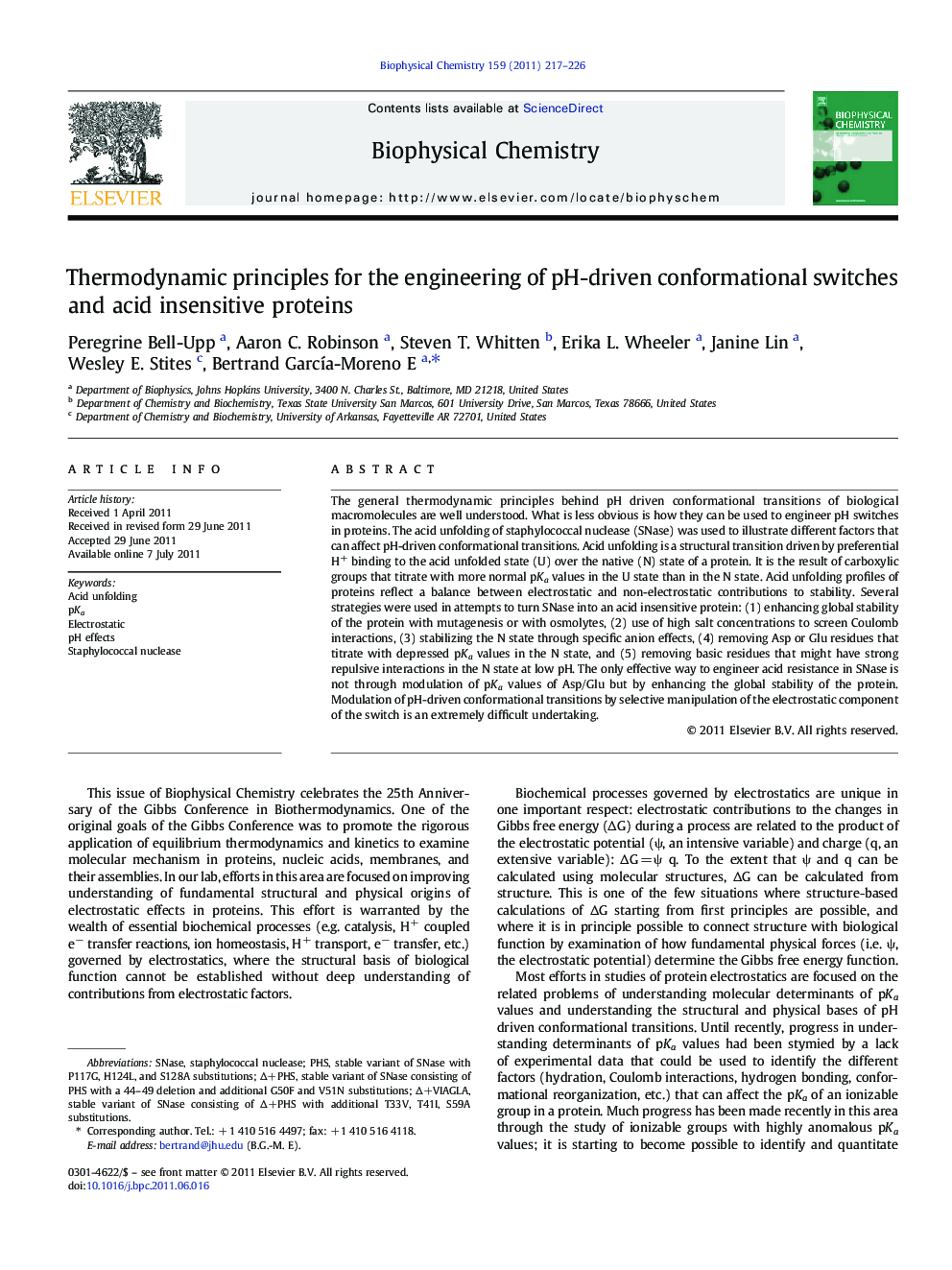| کد مقاله | کد نشریه | سال انتشار | مقاله انگلیسی | نسخه تمام متن |
|---|---|---|---|---|
| 5371411 | 1388818 | 2011 | 10 صفحه PDF | دانلود رایگان |

The general thermodynamic principles behind pH driven conformational transitions of biological macromolecules are well understood. What is less obvious is how they can be used to engineer pH switches in proteins. The acid unfolding of staphylococcal nuclease (SNase) was used to illustrate different factors that can affect pH-driven conformational transitions. Acid unfolding is a structural transition driven by preferential H+ binding to the acid unfolded state (U) over the native (N) state of a protein. It is the result of carboxylic groups that titrate with more normal pKa values in the U state than in the N state. Acid unfolding profiles of proteins reflect a balance between electrostatic and non-electrostatic contributions to stability. Several strategies were used in attempts to turn SNase into an acid insensitive protein: (1) enhancing global stability of the protein with mutagenesis or with osmolytes, (2) use of high salt concentrations to screen Coulomb interactions, (3) stabilizing the N state through specific anion effects, (4) removing Asp or Glu residues that titrate with depressed pKa values in the N state, and (5) removing basic residues that might have strong repulsive interactions in the N state at low pH. The only effective way to engineer acid resistance in SNase is not through modulation of pKa values of Asp/Glu but by enhancing the global stability of the protein. Modulation of pH-driven conformational transitions by selective manipulation of the electrostatic component of the switch is an extremely difficult undertaking.
Highlights⺠Acid unfolding of proteins is governed by Asp and Glu residues that have different pKa values in the native and unfolded states. ⺠Proteins are unfolded by acid because Asp and Glu residues tend to have depressed pKa values in the native state and normal ones in the unfolded state. ⺠Substantial manipulation of the acid unfolding of a protein by direct manipulation of Asp and Glu residues is extremely challenging. ⺠The most efficient way to alter the acid unfolding profile of a protein is through manipulation of global stability with mutagenesis, osmolytes or salt. ⺠The molecular mechanism of the acid unfolding process for a protein can be different at different pH values.
Journal: Biophysical Chemistry - Volume 159, Issue 1, November 2011, Pages 217-226